I was about to get out into the Russian Tundra. To prepare, I pulled on my gumboots, bundled up in my layers of coats and rain gear ready for a messy trek through the forest. Rodney, our expedition leader, announced today was the day we would do a long tundra hike. I had been waiting for this moment to get out and really stretch my legs on the spongy landscape and explore the tundra plants and environment.
Two days prior I was totally excited for a tundra trek on Wrangel Island; the sun was shining, the clouds danced in the bright blue sky, and I needed to get out and hike as I was just starting to feel a tinge of stir crazy that happens to me when I’m on ships. A small group of us who wanted to hike rode in the zodiac to shore and when we were about 25 feet from the shore we saw them – polar bears. Seven white furry heads popped up suddenly interested in the hum of the zodiac in the water. We wouldn’t be hiking that morning.
 No hiking today!
No hiking today!For the past two days we had been confined to the ship and zodiac cruises thanks to the arrival of many polar bears ashore on Wrangel Island. But today Rodney promised us we would get to hike. The wind hit me as I stepped out on the deck and got my first glimpse of our landing at Pitchy Bazaar. It was a rainy, gray day but even that couldn’t dampen my spirits for a hike as I carefully stepped into the bobbing zodiac; I understand why it’s called ‘pitchy’ I thought to myself.
We split into two groups, one that wanted a long hike up to a viewpoint and one that wanted a short hike along the coast; of course I was ready to go the distance. As we started to follow our guide, Alex, I looked ahead at the forest in front of me astonished. We were going to have to slash our way through the forest of Willow trees in order to make it to the viewpoint at Pitchy Bazaar. I followed along in Alex’s bootsteps through the willow trees admiring their fall leaves, but at times they were so dense that I was barely able to find my way out of the forest.
Never mind that the willow trees were only 3 inches tall.

The Willow tree forest on the Arctic Tundra

Everything lives close to the ground on the high arctic tundra – it’s a fascinating environment of plants, trees, and lichen that grows no higher than 15 inches. Tundra plants grow low to the ground and normally close together in order to protect themselves from the wind and cold temperatures. And the higher in the arctic you go, the shorter things get.

Fireweed in Nome Alaska below the Arctic Circle grows tall

The same Fireweed near the Arctic Circle – much shorter and less bushy.

Fireweed on Wrangel Island above the Arctic Circle. Grows very close to the ground in bunches.
Plant Life on the Arctic Tundra
The Tundra is a zone of treeless level or rolling ground found in cold regions, mostly north of the Arctic Circle. The concept of a vast frozen plain as a special ecological realm called tundra was actually developed by the Russians, so it was fitting that I was experiencing it here in Russia – the motherland of the tundra.

The soft tundra feels like a mattress – a perfect place to take a nap!
Even though I never had interest in botany as a kid in school (I’m pretty sure I passed notes to my girlfriends during botany talks as a kid), being on Wrangel Island and the surrounding area awakened my interest in this unique environment. I actually listened to the lectures by the ship botanist with enthusiasm and was excited to see the hearty arctic plant life in action every time we set foot ashore. There’s a total of 417 species of tundra plants on Wrangel Island, 2 times more than at any other arctic tundra territories of the similar size.
Sub Arctic or Low Tundra
This was representative of the area near Anadyr Russia where we started our expedition cruise. It contains diverse shrub, sedges, and grasses, spruce and the occasional pine. Plus you’ll find rocky areas of spore plants; lichens, algae, and mosses. The spore plants provided a beautiful canvas of color to the cliffs and rocks.

The Sub Arctic Tundra is more green and has taller plant life.

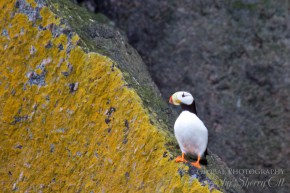
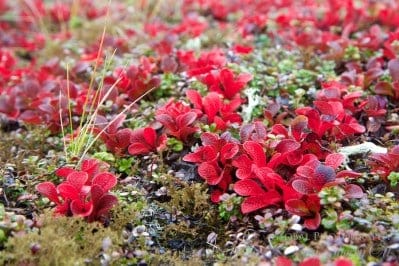
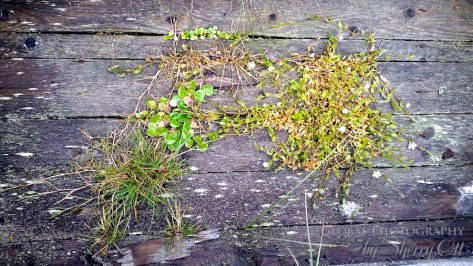
High Arctic Tundra
The high arctic tundra is a massive landscape with absolutely no trees or brushes as we know them. It looks completely barren, like a desert, but this desert has a soft carpet of golden fall colors. Flowering plants and sedges dominate the landscape. And of course dwarfed, vine-like versions of Willow trees – probably the only tree I ever had a shot at climbing!

The High Arctic Tundra on Wrangel Island. A carpet of brown colors and plants

A poppy on Wrangel Island has cup-shaped flowers that face up to the sun, so the sun’s rays are directed towards the centre of the flower. These plants stay warmer than the air around them.

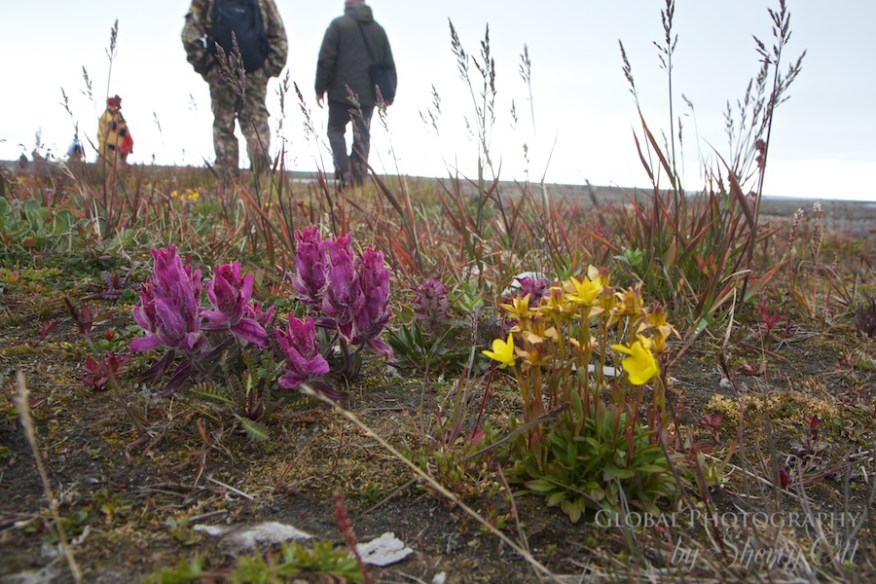
Make the Most of a Short Time
The tundra carpet has such little time to enjoy the sunlight because most of the time it’s buried under snow. However it uses its time wisely, as soon as temperatures are above freezing, the rapid life-cycle begins. Within a few days after the snow begins to melt, perennials flower and some produce seed within 4 weeks. The shorter plants (1 to 3 inches) flower first because they are in the warmer air layers near the ground. The tundra plants make the most of their excessive amounts of sunlight in the summer.
However, plants only flower for a few days or weeks in these environments. The blossoms are colorful and generally large in relations to the size of the plant.
As we walked around Wrangel Island I felt of if I wanted to protect this delicate carpet of flowers that all have to bud at the same time. I tried to not step on them to impact their short life!
It’s a Small World
Our hike through the Willow ‘forest’, through rocky riverbeds, up the spongy tundra hills was a highlight for me during my time on Wrangel Island. As I got to the viewpoint and looked out over the never-ending landscape I was humbled.

Conquering the Arctic Tundra!
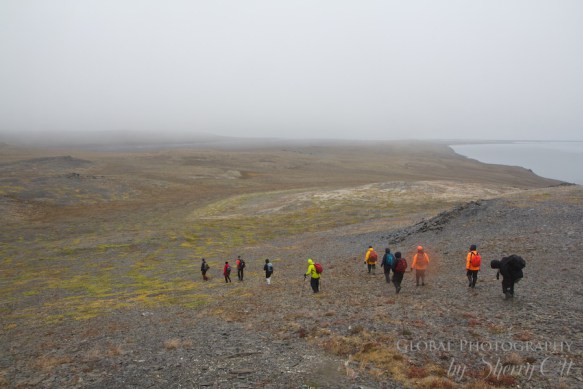

Sherry Ott is a refugee from corporate IT who is now a long term traveler, blogger, and photographer. She’s a co-founder of Briefcasetobackpack.com, a website offering career break travel inspiration and advice.
Additionally, she runs an around the world travel blog writing about her travel and expat adventures at Ottsworld.com.com.








